AGA KHAN PROGRAM FOR ISLAMIC ARCHITECTURE
Course 4.611/4.613:
9-The Hispano-Islamic Villa: The Alhambra: (Click on images to enlarge)
Qur’anic Description of Paradise: The Model?
"Two Gardens....
therein two fountains of running water
And besides these shall be two gardens,
green, green pastures,
therein two fountains of gushing water
therein fruits, and palm-trees, and pomegranates
therein maidens good and comely....
houris, cloistered in cool pavilions....
Of which of your Lord's bounties will you and you deny?"
Sura 55 (al-Rahman) /46-75
Pre-Islamic Precedents:
The Villa of Hadrian, Tivoli, Italy: built c. 124 A.D.
Hadrian's Villa; Aerial view |
The Villas of North Africa:
Villa of Dominus Julius, Charthage: Mosaic detail; Musee de Bardo |
Islamic Precedents:
The Qal‘a of Bani Hammad (1015-1152): In central Algeria, sometime capital of the Hammadids. Its palatial complex is distinguished by a huge rectangular pool bounded by small rooms and a large pavilion, named Dar al-Bahr (Sea Palace).
The Qal'a of Bani Hammad: general plan |
Dar al-Bahr: perspectival section and plan
|
The Madinat al-Zahra (936-978): Outside of Cordoba, Spain, founded by Abd al-Rahman III, the first Umayyad to declare himself a caliph. Its "Salon Rico" has a basilical plan and overlooks a huge pool to the south.
Madinat al-Zahra: site plan |
Salon Rico: exterior view |
The Villas of al-Andalus: The Evidence of Bayad wa Riyad
An illustration of a villa with a water wheel from the story of Bayad wa Riyad, 13th c. |
The Alhambra: A name retained from the original al-Qal‘a al-Hamra (the Red Fort), this royal city was the seat of the Nasrids (1238-1492), the last Islamic dynasty in Spain who took Granada as capital. The enclosure is divided into two parts, the Alcazaba, or the fort proper to the west and the Madina, or the royal city to the east.
Aerial view of the Alcazaba part of the Alhambra |
The Alhambra boasted of numerous palaces and residences, in addition to gardens, suqs, and cemeteries.
The most important palaces are:
The Court of Myrtles: Built around 1333 and attributed to Yusuf I, it follows the same general organization of a Granadine regular residence with a rectangular pool surrounded by four units on the longitudinal sides and a main reception hall called the Hall of the Ambassadors to the north that overlooks the city.
A section through the Court of Myrtles showing the lines of view from the Hall of the Ambassadors |
Court of Myrtles: view across the basin towards the Hall of the Ambassadors |
The Court of the Lions: Attributed to Muhammad V (1354-59, 1362-91), it is a marvellous structure arranged around the famous fountain of the lions.
Court of Lions; view towards the fountain |
vCourt of Lions; perspective view |
Muqarnas in the Hall of the Two Sisters |
Generalife or Jinane al-'Arif, Arabic for the Gardens of the Superintendent is the external, terraced garden with a villa rustica attached to the Alhambra by a special passage
Generalife |
Generalife Summer palace; perspective |
Generalife; drawing bird's eye perspective |
Architectural Properties:
- Garden as rectangular enclosure surrounded by high walls
- Quadripartite division through a cruciform plan
- The importance of vistas from centrally-located pavilions
- The soliloquies of the architectural elements
Water Uses:
- Central collecting, deep pool or distribution point (taqsim)
- Irrigation by channels incorporated in walkways
- Sunken bowls at end of channels
- Single-stream jets.
Character of the Garden:
- Contains flowers and medicinal herbs, evergreen and fruit trees and vines.
- Flower beds are sunk both for aesthetic and irrigation purposes.
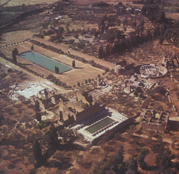
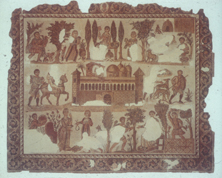
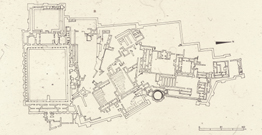
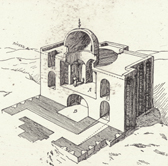
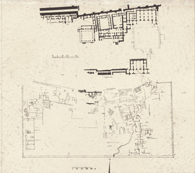
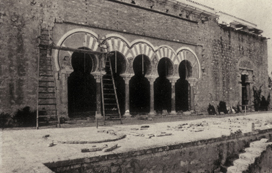
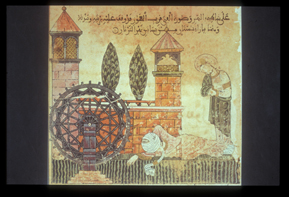
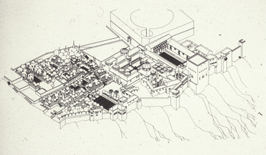
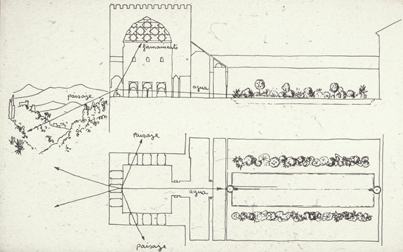
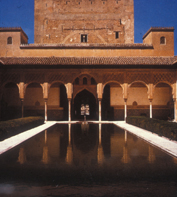
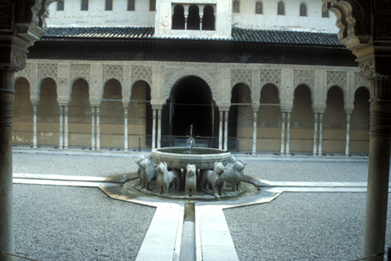
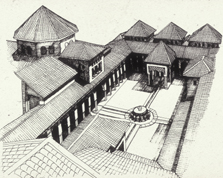
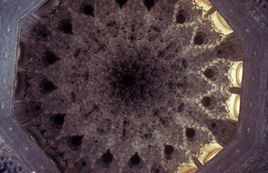
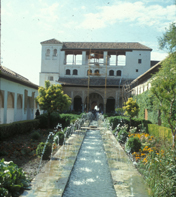
 perspective-9.jpg)
 drwg bird's eye perspective-9.jpg)